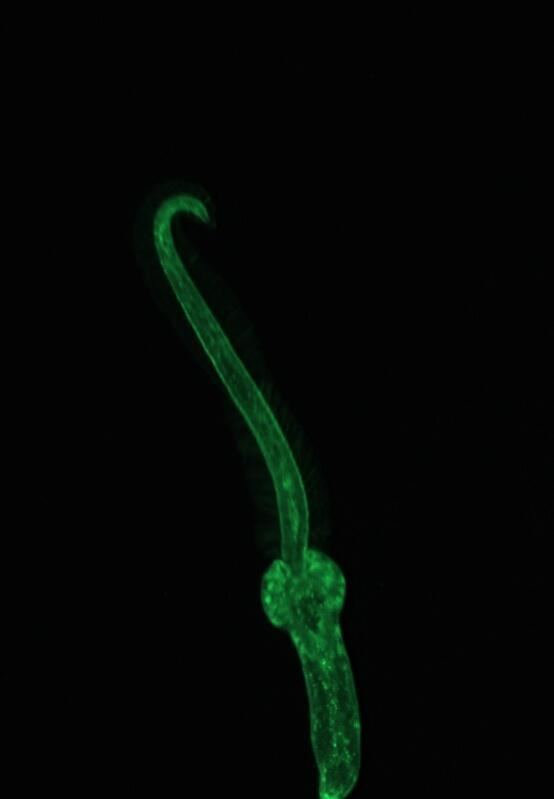Higher classification Euhaplorchis | Phylum Platyhelminthes Order Opisthorchiida Genus Euhaplorchis Rank Species | |
 | ||
Scientific name Euhaplorchis californiensis Similar California killifish, Hymenoepimecis argyraphaga, Spinochordodes tellinii, Cerithideopsis californica, Green‑banded broodsac | ||
The return of the euhaplorchis californiensis parasite
Euhaplorchis californiensis is a trophically transmitted parasite (TTP) that lives in the salt-water marshes of Southern California. Its lives in three hosts: shorebirds, horn snails, and killifish. As with many TTPs, E. californiensis modifies the behavior of the host to increase the likelihood of transmission to its next host.
Contents
- The return of the euhaplorchis californiensis parasite
- Euhaplorchis californiensis cercariae
- Life cycle
- Effects on the ecosystem
- References

Euhaplorchis californiensis cercariae
Life cycle

The parasite’s eggs are released in the droppings of shorebirds. Horn snails consume the droppings and become sterile. Once the parasite has lived in the snail a couple of generations, the cercariae (the disk-shaped larva of flukes of the class Trematoda, which have a tail-like appendage) swim out into the marsh.

The cercariae latch onto the gills of the killifish and make their way along a nerve and into the brain cavity. The parasite forms a “carpet-like” layer over the brain. According to Lafferty, infected killifish are four times more likely to “shimmy, jerk, flash, and surface” than uninfected fish. This behavior makes the infected fish 30 times more likely to be caught and consumed by a bird. Once the fish is consumed, the parasite lives in the bird’s gut and produces eggs to be released in the stool, which is spread into the marshes and ponds.
Effects on the ecosystem

Armand Kuris speculates that the predator in this host-parasite interaction benefits by acquiring food easily. He also claims that the susceptibility of infected killifish to be picked up by their avian predators has led to a diverse and abundant assemblage of piscivorous birds along the coasts.

Lafferty did a study to observe how a population of un-parasitized snails performs in the absence of infected snails. He found that they released more eggs and became densely populated. He proposes that the snail population in the natural environment would be nearly double what it is if it weren’t for the parasite Euhaplorchis californiensis.

